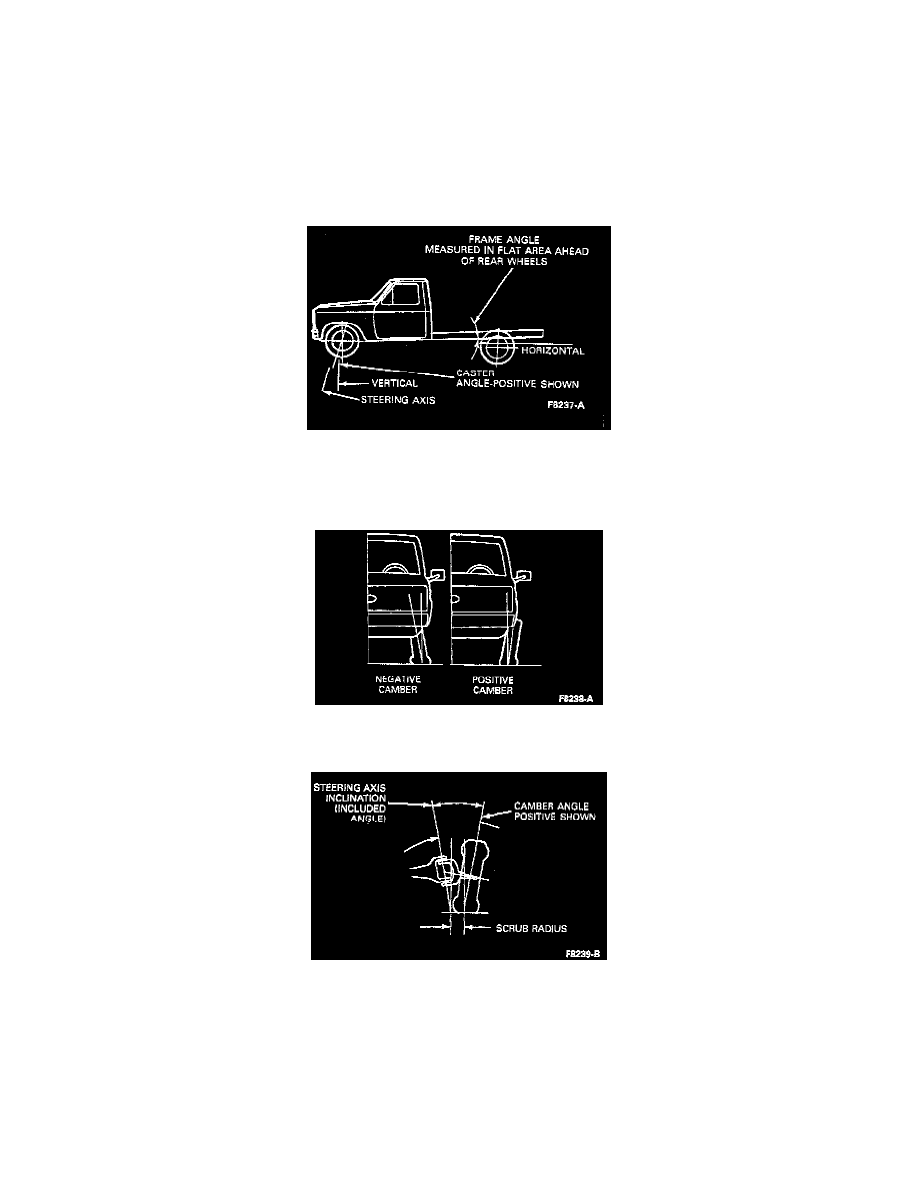F 250 2WD HD Pickup V8-7.3L DSL Turbo VIN F (1997)

Alignment: Description and Operation
DESCRIPTION
Wheel alignment measurements describe the angular orientation of the wheel/tire assembly and the steering axis.
Caster, camber and toe are the three major, measurable alignment parameters.
^
Camber and toe affect tire wear and directional stability.
^
Caster affects directional stability without causing tire wear.
^
The values of caster, camber and toe change when a vehicle Reloaded and driven. Therefore, the specifications shown in this section reflect the
static measurement of alignment required so the vehicle will have an alignment when driven that is most favorable for tire wear and directional
stability.
CASTER
Caster is used to describe the vertical fore-aft tilt of the steering axis. This axis is defined by a line drawn through the centers of the spindle ball joints
and is measured relative to the ground. Because of this, raising (or lowering) the rear without changing front ride height will subsequently decrease (or
increase) the caster angle by the same amount the frame angle changes.
CAMBER
Camber is used to describe the vertical tilt of the wheel as viewed from the front.
^
Steering axis inclination (included angle) is the line to the axle drawn through the spindle ball joint when viewed from the front.
^
Included angle is a function of the spindle itself and does not change with changes in ride height or frame angles.
^
Scrub radius is the offset of the center of the tire tread at the ground to the point where the steering axis contacts the ground.
